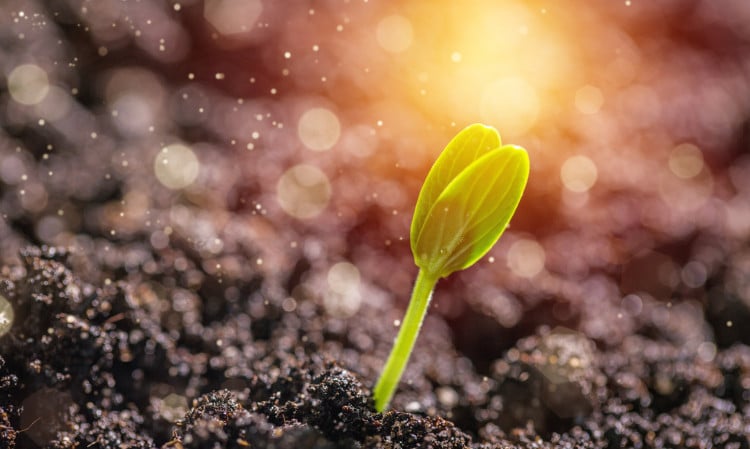After all the festive overindulgence, many of us feel the need to get outside and burn off a few dozen delicious mince pies. And it’s just as well that there are plenty of January jobs to tackle in the garden!
Here are my top 3 tasks to tick off this month.
Prep for soil success
You’ll need a dry day for this, when the ground isn’t too soggy. Ideally just before a sharp frost is forecast, to get maximum results from your efforts!
Just as the farmers pick a frosty morning to get out with the plough, so we gardeners can use the action of frost to break up the ground we want to cultivate in spring.
Technique
You only need to turn the soil over, creating large clods of earth. The action of freezing and thawing on the moisture within the soil breaks these large lumps into smaller ones, doing the hard work for us!

Digging over our vegetable plots and flowerbeds, exposes weed roots so we can pull them out. It also lets birds eat the grubs of many garden pests which are hiding below the surface. This activity aerates the texture, breaking up compacted areas.
This makes it easier to mix in organic material, creates better drainage and allows plants to spread out their root systems.
So a few hours well spent in winter, will reap dividends all year long – and should mean fewer pest problems and a better harvest.
Feed the birds
At this time of year, there’s very little naturally occurring food about for our feathered friends.
To keep them healthy through this chilly season, it’s important to put food and water out frequently. This means that they can have a good meal when they pop by every day.
Hang large bird feeders that can be filled up once a week. This keeps the birds well supplied with nuts and seeds.

Fat Balls
An even better option is to make your own fat balls. Mix 2 parts birdseed and 1 part lard together evenly. Then mould into shapes or push into old yogurt pots, place string through the middle and hang them up.
The added fat helps birds stay warm through the coldest weather, when they would otherwise lose weight.
Despite finding a sheltered spot to roost and fluffing up their feathers, garden birds use the most energy just generating heat when the temperature drops below zero.
Grow winter crops
Despite the inclement weather, there’s nothing to stop you growing your own. Start by sowing seeds on a windowsill, using the heat from your home to get them off to a flying start.
Good old mustard & cress is a great favourite for kids to help with, but there are so many more options you can try! Growing fast-cropping microgreens will give you the best nutritional return on your time. They’re a great way to get the growing season started and benefit your health into the bargain.
Try basil, radish or even broccoli, sunflower, beetroot or pea shoots – it’s such an easy process.

Use damp seed compost or cotton wool in a small plastic tray. Sow the seeds evenly over the surface, cover with a plastic bag and keep out of direct sunlight until they germinate.
Once you can see shoots, move the tray to the windowsill, remove the bag and spray frequently with water to make sure they stay moist. Once they’re about 4-5cm tall, they’re ready to eat, so chop them off at the base and enjoy – once harvested they’ll keep fresh in the fridge for a few days, or simply cut as required.
Rhubarb is another winter growing favourite. You can plant now if you choose a dry day with no frosts.
What you need to do
Make sure you add plenty of organic material (well-rotted horse manure is my top tip) and dig this into the soil around your chosen planting spot. This should be free-draining and in an area which gets plenty of sunshine.
Spread the roots of your rhubarb crown out well, and gently cover with soil and firm in. The top of the crown should just be visible – then water in well. Newly planted rhubarb needs to be left to grow. If you harvest too soon, you’ll limit the growth of the plant.
If you’ve already got rhubarb growing in your garden, it can be forced – to get really sweet, early harvested stems. Get an old dustbin and cut the bottom out of it. Then pop the lid or a piece of board over the top, to keep it warm and dark. This encourages the plant grow rapidly upwards, in search of daylight.
These fast-grown, or forced stems will be ready to harvest in about 8 weeks. Making the sweetest, tastiest compote or crumble – and they must be just about the earliest fruit harvest you can get from your garden!

Thank you for advice.